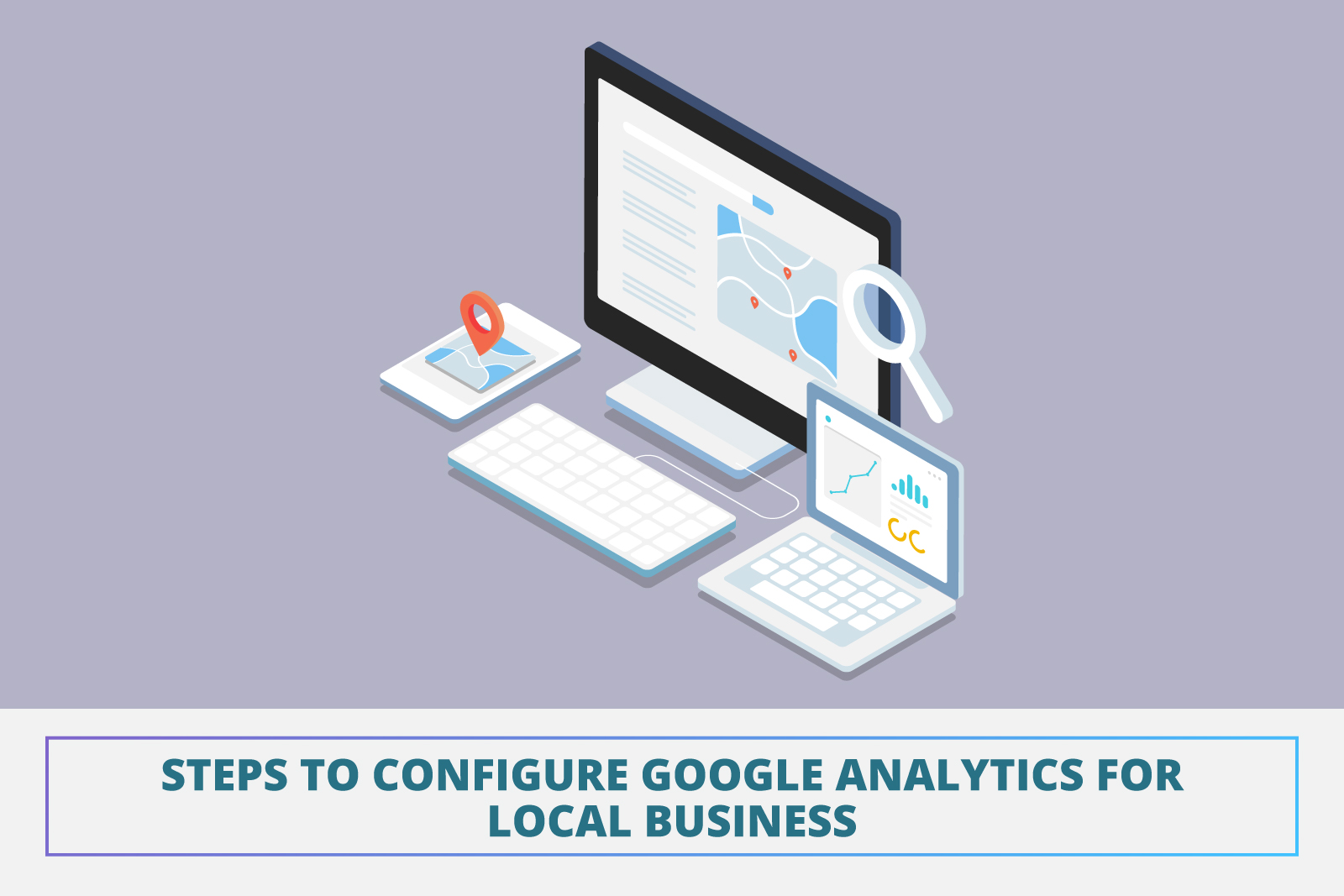What Is the Purpose of Google Analytics?
You’ll have access to various data about your website and its visitors if you utilize Google Analytics. It is the most famous tools for digital marketers, and for a good reason: it is used by 56 percent of all websites. It gives you comprehensive information on the visitors to your website. Google Analytics may give you a plethora of data, including the following:

- Total number of individuals who have visited your website
- Individual page traffic is what brought you to these websites.
- How many prospects become customers, and how many of your leads were generated by those sites?
- Demographic information about the visits (e.g., where they live)
- Whether your site users are using a mobile device or a desktop computer,
Google Analytics can assist businesses of all sizes. When used correctly, it generates relevant data that one can use to make informed business decisions about online marketing and SEO.
Google Analytics is a robust and efficient tool when utilized and configured appropriately. This, in conjunction with Google Search Console, reveals a great deal about your website, your visitors, how well specific pages perform, and even what search phrases your visitors use. There is a combination of valuable information here that will help us with our internet marketing and SEO efforts.
Bots and Spiders should get kept out of your website.
Today, we’ll go through the top five steps for setting up your Google Analytics account for optimal effectiveness. For starters, no robots or spiders are permitted. Given that bot traffic accounts for up to 25% of all traffic, this is critical information to be aware of. I’m sure you’ve seen some of the more prominent examples of bot traffic if you’ve looked far enough into your Google Analytics account.
So, under Google Analytics, Google develops a helpful little widget that allows us to do this. You’ll find a box labeled “Bot Filtering” when you go to Admin > View > View Settings. Select it by clicking on it. It employs the Interactive Advertising Bureau’s list of known spiders and bots to assure that we are filtering against them, which it does.

Spam and Personal Traffic should be kept Separate.
As a next step, we’d like to distinguish between spam and real traffic. Isn’t it true that incorrect data has no worth? As a result, without sufficient knowledge, making business decisions concerning our SEO or online marketing would be difficult, if not impossible. Several business owners I’ve met are making decisions based on utterly inaccurate data.
As a result, we must obtain as much exact information as possible. There will always be some inaccuracy, but we should try to minimize it as small as possible. Go to Admin > View > View Filters and click the Add Filters button on the left-hand side menu bar to remove our traffic. We want to ensure that the IP address of our team, home office, or primary office location is filtered out, and so on.
Go to Google. Type “What’s my IP?” to find out. You’ll be able to find your IP address and then ban access to it.
Set Goals for Yourself.
Setting goals is the third phase. It is vital to set goals because they allow us to track our progress. It’s a way to keep track of your development. Goals can be created using Admin > View > Goals and New Goal.
Objectives with a Destination-Based Goal
We may be able to construct a variety of distinct goal types depending on your organization and what you’re attempting to achieve. However, one of the most distinct possibilities is a thank you page or a goal with a particular destination.
Assume you’re an HVAC company looking to recruit new clients and want to examine how your website is performing, which pages are attracting visitors, and what kind of URL path, or goal path, you’re taking.
As a result, defining a goal with a clear destination will assist us in keeping track of our progress. Ensure that those who fill out a form are directed to the thank your page. We can turn every interaction with ‘The Thank You Page’ into a goal. Seeing the performance of our company goals, what we’re striving to achieve in a given month or quarter, is quite valuable since we can precisely assess that.
Goals Linked to Particular Events.
There are other targets, but we’ll concentrate on two goals: destination-based goals and event-based goals. Setting up event-based goals is a little more complicated than setting up destination-based goals, but not by much. Event-based goals, as opposed to a page or URL-based goals, are focused on the actual event that occurred.
It means that filling out an online form or clicking on an icon are examples of events associated with a goal. Both options have pros and cons. If the URL contains any particular parameters that do not match perfectly, it may not count as a destination-based objective.
You can get around this by substituting “begins with” for “equals to.” You could also learn regular expressions, which is the best solution. We’ll have better data if we can rule out some of those possibilities. When implementing event-based goals, it’s also critical to double-check your validation.
For example, if a person starts filling out a form but does not finish it, the first time they click on that button, it may have been marked as a goal, even if they did not finish it. Ultimately, there are a few different stages that one must complete before the information may be published. As a result, we will have more accurate statistics.
GSC should be Linked to GA
Google Analytics, which is number four on the list, should be linked to Google Search Console. Our reporting and information resources have grown dramatically, and we want to guarantee that they can effectively communicate. Those of us familiar with Google Search Console know that it offers a variety of information about our organic search, such as which search phrases people are using, which sites they are visiting, and how well they are performing.
That’s fantastic if it’s linked to Google Analytics. Select Search Console from the drop-down menu under Admin > Property > Property Settings. It is how we can accomplish it. To begin, ensure that your Google Search Console account is already activated. Firstly, identify the problem. It will be easier to connect those two if we can get it up and running first. You must first configure your Google Search Console to make this work. As a result, before starting, double-check that everything is configured correctly.
To keep Track of your Progress, use UTM Tracking Tags.
If possible, use UTM tracking codes as a last step. It’s a terrific way to analyze how different successful initiatives were, where our clients came from, and what specific sources, mediums, or campaigns were most effective at bringing in new customers.
It is possible to add a UTM tracking code to your Google My Business link profile. For example, any users who arrive from Google My Business can accurately identify website visitors who arrived through Google My Business in your Google Analytics account. It must now be done regularly, not only for Google My Business but for each campaign as a whole.
As a result, smaller, local firms with limited resources or time may prefer to concentrate on only a few of the more considerable efforts, such as anything that is more long-term or a single extensive campaign. Perhaps you’re putting on a community event or running a seasonal promotion. These are the kinds of things we’d want to keep an eye on if we wanted to assess the campaign’s success.
The Campaign URL Builder from Google makes it simple to generate a unique UTM tracking code for your campaign. We’ll put a link to that page in the section below the main text. A UTM tracking code, on the other hand, is made up of several separate elements. Because all three of these characteristics are vital at the moment, we’ll solely focus on them today.
The source may be an email newsletter, one could email the medium, and the campaign name could be whatever you want it to appear as in Google Analytics, depending on how you want to classify that campaign. There you have it, the three portions of your UTM tracking code. Enter all of this information into the Google Campaign URL Builder. There are more URL generators available. Google, on the other hand, provides a user-friendly one.
Recommendation: familiarize yourself with Google Tag Manager.
Read online lessons to become acquainted with Google Tag Manager. Google Tag Manager has a learning curve, but it is certainly possible to master it. I know you’ll be able to pull it off. Setting up event-based goals and linking other Google accounts, such as Google Search Console and Google Analytics, becomes a lot easier if you grasp Google Tag Manager.
Conclusion
Google Analytics should be in the toolset of any digital marketer. With this application, you’ll be able to track the growth of your website and other digital marketing efforts.
With its help, you’ll be able to track ROI and have a deeper understanding of your audience. If you don’t have it, you’ll be at sea without a compass or a chart (which is to say, very lost).







